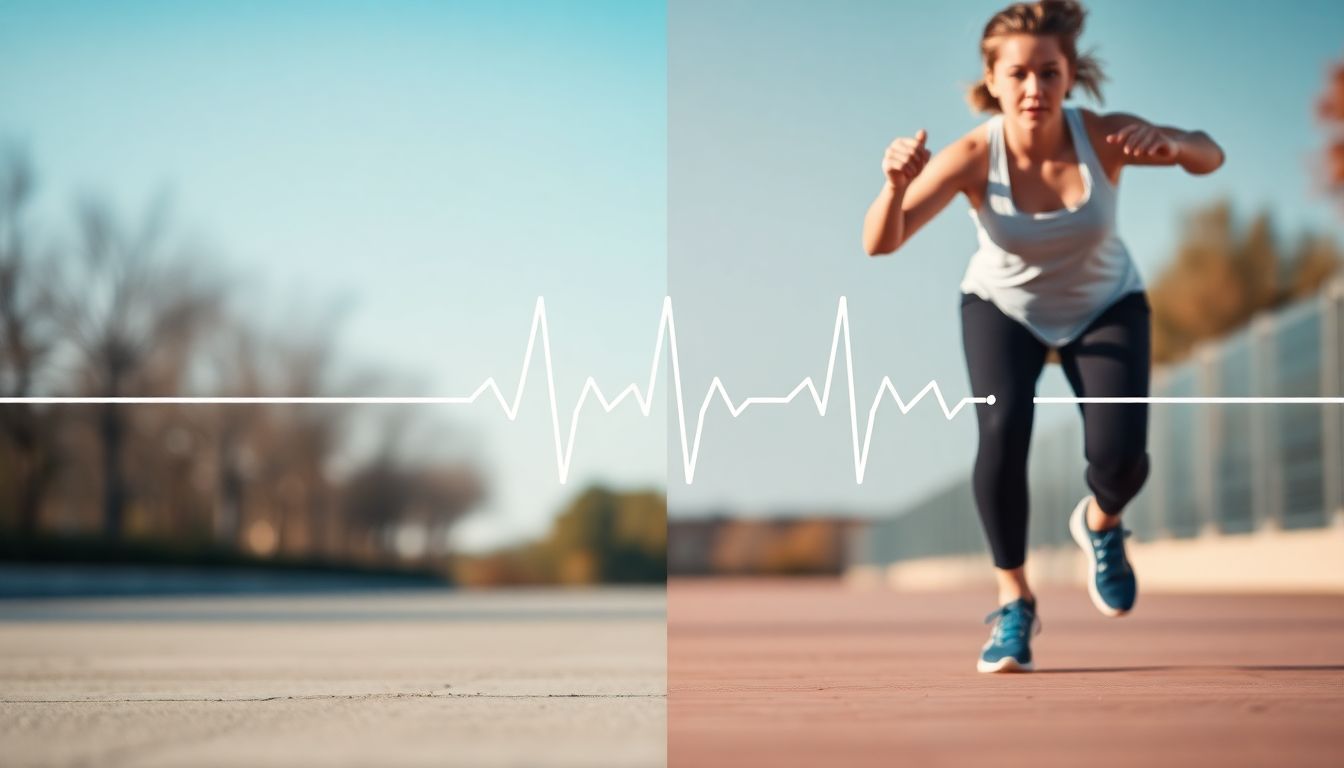Both walking and high-intensity interval training (HIIT) are known to improve cardiovascular fitness — but which is better for lowering blood pressure and supporting long-term heart health?
The answer depends on your fitness level, age, and health goals.
While walking offers steady, low-stress benefits, HIIT provides faster fitness gains and metabolic boosts — but may not suit everyone with hypertension.
This article breaks down how each exercise affects blood pressure and heart function so you can choose what’s best for your body.
(Related Reading: Best Exercises to Lower Blood Pressure Naturally)
❤️ How Exercise Affects Blood Pressure
Exercise lowers blood pressure by:
- Strengthening the heart muscle, improving its efficiency.
- Promoting vasodilation (widening of arteries).
- Reducing stress hormones that constrict blood vessels.
- Enhancing nitric oxide production, which keeps arteries flexible.
Regular physical activity can reduce systolic blood pressure by 5–10 mmHg, helping prevent heart disease and stroke.
🚶♂️ Walking: Gentle, Consistent, and Effective
Walking remains one of the safest and most sustainable ways to lower blood pressure.
✅ Benefits of Walking for Heart Health
- Improves blood circulation and oxygen flow.
- Reduces arterial stiffness.
- Lowers stress through rhythmic movement and breathing.
- Supports weight management without overloading joints.
💡 Science says:
A 2021 study in the European Journal of Preventive Cardiology found that adults who walked briskly for 30 minutes daily had 8% lower risk of hypertension compared to those who were sedentary.
🕒 Recommended Routine
- Frequency: 5–7 days per week
- Duration: 30–45 minutes
- Intensity: Brisk (can talk but not sing)
(Also read: Morning Habits That Help Reduce High Blood Pressure)
⚡ HIIT: Fast Results, Greater Intensity
HIIT (High-Intensity Interval Training) involves short bursts of high effort followed by recovery.
Example: 30 seconds of sprinting, 90 seconds of slow walking — repeated for 15–20 minutes.
✅ Benefits of HIIT for Heart Health
- Improves cardiovascular capacity quickly (VO₂ max).
- Reduces insulin resistance and supports weight loss.
- Enhances nitric oxide and vascular flexibility.
💡 Science says:
A 2019 Hypertension Research study found that participants performing HIIT 3 times per week for 8 weeks had greater blood pressure reductions than those doing moderate-intensity continuous training — but only when supervised and performed safely.
⚠️ Caution for Beginners
- HIIT causes short-term spikes in blood pressure, so it’s best for people with controlled hypertension.
- Always warm up, and stop immediately if you feel dizzy or lightheaded.
(Also read: How Stress Affects Blood Pressure (and Natural Remedies That Work))
⚖️ Walking vs. HIIT: Side-by-Side Comparison
| Feature | Walking | HIIT |
|---|---|---|
| Effect on Blood Pressure | Gradual, steady reduction | Rapid improvement (if tolerated) |
| Stress on the Heart | Gentle and consistent | Short bursts of high strain |
| Best For | Beginners, seniors, daily activity | Experienced exercisers |
| Frequency | Daily | 2–4 sessions per week |
| Risk Level | Very low | Moderate to high (requires supervision) |
| Additional Benefits | Improves mood, sleep, and joint mobility | Boosts endurance and metabolism |
🩸 Which Is Better for Blood Pressure?
If your goal is long-term blood pressure control and overall health, walking wins for consistency and safety.
If your goal is fitness performance and time efficiency, HIIT can be more effective — once your cardiovascular system is strong enough.
💡 The best plan often combines both:
- 4–5 days of walking or light cardio
- 1–2 days of HIIT or interval workouts
(Also read: DASH Diet vs. Blood Pressure Supplements: Which Works Best?)
🧘♀️ Combine Exercise with Mind–Body Relaxation
Regardless of intensity, adding yoga, stretching, and deep breathing helps regulate stress — a major cause of high blood pressure.
(Also read: The Complete Guide to Lowering Blood Pressure Naturally)
⚠️ Safety Guidelines
✅ Always consult your doctor before starting HIIT if you have high blood pressure.
✅ Start slow — build aerobic base first (through walking or cycling).
✅ Avoid holding your breath during exertion.
✅ Monitor your heart rate — aim for 50–75% of your max HR during moderate exercise.
✅ Stay hydrated and rest adequately.
(Also read: Is It Safe to Take Blood Pressure Supplements with Medication?)
❓ FAQs — Walking vs. HIIT for Heart Health
- Which is better for lowering blood pressure — walking or HIIT?
Walking is safer and highly effective for steady results; HIIT works faster but may not suit everyone. - Can I combine walking and HIIT?
Yes — alternate between both for balanced heart health. - Is HIIT safe with hypertension?
Only if blood pressure is controlled and approved by your doctor. - Does walking lower blood pressure immediately?
A single walk can reduce blood pressure for several hours. - How often should I walk?
5–7 days per week, 30–45 minutes each session. - How often should I do HIIT?
2–4 times per week, with rest between sessions. - Does HIIT increase stress?
Temporarily, yes — but long-term it can lower resting BP once adapted. - Is brisk walking enough for heart health?
Absolutely — it’s one of the most proven heart-protective activities. - Can I lower my blood pressure without running?
Yes — walking, yoga, cycling, and swimming all work effectively. - When will I notice results?
Most people see improvement in 3–6 weeks with consistent exercise.
❤️ Final Thoughts
When it comes to heart health, the best exercise is the one you can sustain.
Walking provides steady progress and mental clarity, while HIIT offers rapid fitness gains — both are powerful when done mindfully.
Start with walking, build endurance, and add intervals when ready.
Your heart will grow stronger, your circulation smoother, and your blood pressure naturally balanced.
(Also read: Best Natural Supplements to Lower Blood Pressure)

- Enhances Nitric Oxide for Better Exercise Circulation
- Supports Blood Vessel Flexibility During Activity
- Reduces Oxidative Stress from Both Exercise Types
- Helps Your Body Adapt to Any Workout Intensity
- Complements Your Preferred Exercise Style
🌿 Universal Exercise Support: Whether you prefer gentle walking or intense HIIT, BP Zone provides natural cardiovascular support
📊 Science-Backed: Both walking (8% lower hypertension risk) and HIIT (greater BP reductions) work effectively – BP Zone enhances both approaches











